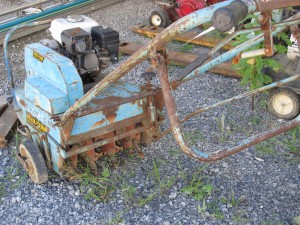Is your lawn nothing but bare spots, thatch, and weeds? Late summer and fall is an ideal period to reduce thatch build-up and repair dead lawn areas. Thatch is composed of old grass clippings, e.g. leaf and stem debris not decomposed. By aerating the soil and removing thatch, you will improve soil water absorption and fertilizer uptake by the grass roots.
Equipment rental outlets in your area have “core aerators” and “spikers” to loosen the compacted soil and remove the unwanted thatch from the surface. Make two passes, criss-crossing the lawn area north to south and east to west. Next, rake up all loosened thatch and compost this organic debris to improve your garden soil in the future.
Since you have shallow-tilled the soil, use this opportunity to disperse grass seed. Most equipment companies rent a slit seeder for this task. Professional lawn companies also provide this service. The equipment tines slice through the soil and drop the grass seed in place. Fertilize and irrigate after seeding as needed.
The invasion of most annual weed grasses, such as crabgrass, goose grass, and foxtail, is over for the year. The cool autumn weather will destroy weedy roots and shoots. Unfortunately, all the seeds that the weed grasses dispersed will germinate next spring and summer. Thickening and improving the health of the home lawn this fall should choked out most weed seeds next spring.
Tending to problem broadleaf weeds such as dandelions, clover, ground ivy, thistles, plantains, and wild garlic is your final step. Broadleaf weeds can be managed by using contact herbicides containing triclopyr, dicamba, and MCPA. Products that contain all three ingredients are recommended.
Caveat: do not use any herbicides until the new grass seeding (or over-seeding) have been mowed at least twice.


 Posted in
Posted in 
